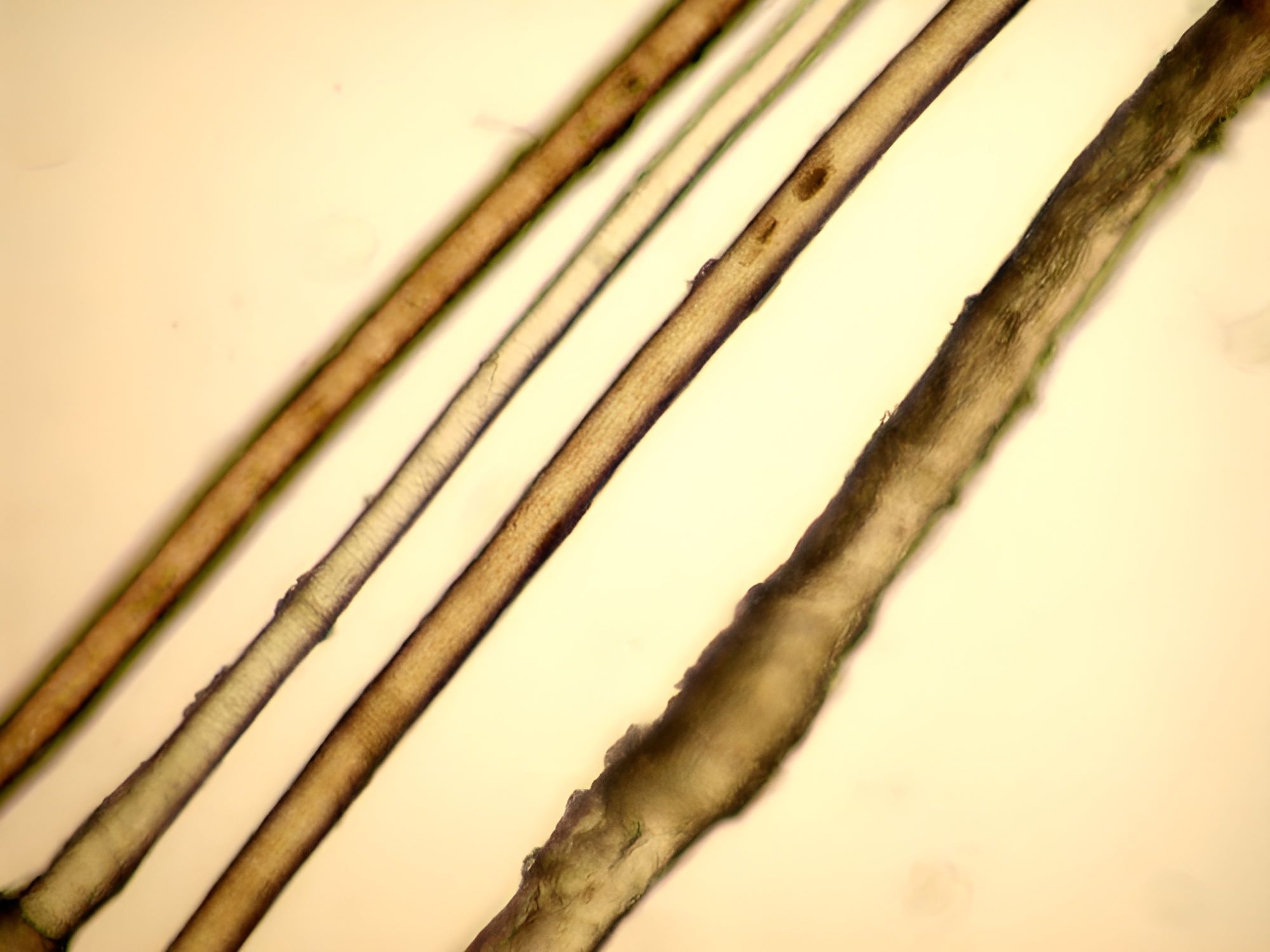
Trichothiodystrophy (TTD) is a rare genetic disorder that affects hair, skin, and nails. Characterized by brittle hair, TTD often leads to hair loss and other physical abnormalities. Caused by mutations in specific genes, this condition can also impact intellectual development and growth. Symptoms vary widely, making each case unique. Diagnosis typically involves genetic testing and examination of hair under a microscope. Treatment focuses on managing symptoms, as there is no cure. Understanding TTD can help families and medical professionals provide better care and support. Here are 40 facts to help you grasp the essentials of this complex disorder.
Key Takeaways:
- Trichothiodystrophy is a rare genetic disorder affecting hair, skin, and development. It requires regular care and support, but ongoing research offers hope for better treatments in the future.
- Individuals with Trichothiodystrophy may have brittle hair, skin issues, and developmental delays. While there is no cure, treatments and support can help manage symptoms and improve quality of life.
What is Trichothiodystrophy?
Trichothiodystrophy (TTD) is a rare genetic disorder affecting multiple systems in the body. It primarily impacts hair, skin, and nails but can also cause developmental delays and other health issues. Here are some intriguing facts about this condition.
-
TTD is a genetic disorder: It is inherited in an autosomal recessive manner, meaning both parents must carry the defective gene for a child to be affected.
-
Named for brittle hair: The name "trichothiodystrophy" comes from Greek words meaning "hair" (tricho), "sulfur" (thio), and "disorder" (dystrophy), highlighting the brittle, sulfur-deficient hair characteristic of the condition.
-
Sulfur deficiency: Hair in TTD patients has low sulfur content, making it brittle and prone to breakage.
-
Photosensitivity: Many individuals with TTD are sensitive to sunlight, which can cause skin problems and increase the risk of skin cancer.
-
Neurological issues: TTD can lead to developmental delays, intellectual disabilities, and other neurological problems.
Symptoms and Diagnosis
Understanding the symptoms and how TTD is diagnosed can help in managing the condition effectively.
-
Brittle hair: One of the most noticeable symptoms is brittle, easily broken hair.
-
Ichthyosis: This skin condition, characterized by dry, scaly skin, is common in TTD patients.
-
Short stature: Many individuals with TTD have shorter-than-average height.
-
Facial features: Distinctive facial features, such as a prominent forehead and small chin, are often seen.
-
Delayed development: Developmental milestones, such as walking and talking, may be delayed.
-
Photosensitivity testing: Diagnosis often involves testing for sensitivity to UV light.
-
Microscopic hair analysis: Examining hair under a microscope can reveal the characteristic sulfur deficiency.
Genetic and Molecular Basis
The genetic and molecular underpinnings of TTD provide insight into its complexity.
-
ERCC2 gene mutation: Mutations in the ERCC2 gene are a common cause of TTD.
-
Other genes involved: Mutations in ERCC3, GTF2H5, and MPLKIP genes can also cause TTD.
-
DNA repair defects: TTD is often associated with defects in DNA repair mechanisms.
-
Transcription factor IIH: Many TTD-related genes are part of the transcription factor IIH complex, crucial for DNA repair and transcription.
-
Genetic testing: Genetic testing can confirm a TTD diagnosis by identifying mutations in the relevant genes.
Treatment and Management
While there is no cure for TTD, various treatments can help manage symptoms and improve quality of life.
-
Regular dermatological care: Managing skin conditions like ichthyosis requires regular care from a dermatologist.
-
Sun protection: Using sunscreen and protective clothing helps manage photosensitivity.
-
Physical therapy: Physical therapy can aid in improving motor skills and overall development.
-
Special education: Tailored educational programs can support children with developmental delays.
-
Nutritional support: Ensuring a balanced diet can help manage some symptoms.
-
Regular monitoring: Regular check-ups with various specialists are crucial for managing the condition.
Living with Trichothiodystrophy
Living with TTD involves adapting to various challenges but also finding ways to thrive.
-
Support groups: Connecting with others who have TTD can provide emotional support and practical advice.
-
Awareness and advocacy: Raising awareness about TTD can help garner support and funding for research.
-
Adaptive devices: Using adaptive devices can improve mobility and independence.
-
Mental health support: Counseling and mental health support are important for both patients and their families.
-
Community resources: Accessing community resources can provide additional support and services.
Research and Future Directions
Ongoing research aims to better understand TTD and develop new treatments.
-
Gene therapy: Researchers are exploring gene therapy as a potential treatment for TTD.
-
Stem cell research: Stem cell research may offer new avenues for treating the condition.
-
Clinical trials: Participating in clinical trials can provide access to new treatments and contribute to scientific knowledge.
-
Animal models: Studying TTD in animal models helps researchers understand the disease and test new treatments.
-
International collaboration: Collaboration among researchers worldwide is crucial for advancing TTD research.
Interesting Facts
Here are some additional fascinating facts about TTD that you might not know.
-
Rare condition: TTD is extremely rare, with only a few hundred cases reported worldwide.
-
First described in 1971: The condition was first described in medical literature in 1971.
-
Variable severity: The severity of TTD can vary widely, even among individuals with the same genetic mutation.
-
Life expectancy: Life expectancy can be reduced, but many individuals live into adulthood.
-
Multisystem disorder: TTD affects multiple systems in the body, making it a complex condition to manage.
-
Research funding: Funding for TTD research is limited due to its rarity, making advocacy important.
-
Hope for the future: Advances in genetics and molecular biology offer hope for better treatments and possibly a cure in the future.
Final Thoughts on Trichothiodystrophy
Trichothiodystrophy (TTD) is a rare genetic disorder affecting hair, skin, and nails. It’s caused by mutations in genes responsible for DNA repair. Symptoms include brittle hair, intellectual disability, and photosensitivity. Diagnosing TTD involves genetic testing and clinical evaluation. Treatment focuses on managing symptoms since there’s no cure.
Living with TTD can be challenging, but support from healthcare providers and communities can make a big difference. Awareness and research are crucial for better understanding and managing this condition. If you or someone you know is affected by TTD, connecting with support groups and specialists can provide valuable resources and emotional support.
Understanding TTD helps in recognizing the importance of genetic research and the need for continued support for those affected. Knowledge empowers us to advocate for better treatments and support systems for rare genetic disorders like TTD.
Frequently Asked Questions
Was this page helpful?
Our commitment to delivering trustworthy and engaging content is at the heart of what we do. Each fact on our site is contributed by real users like you, bringing a wealth of diverse insights and information. To ensure the highest standards of accuracy and reliability, our dedicated editors meticulously review each submission. This process guarantees that the facts we share are not only fascinating but also credible. Trust in our commitment to quality and authenticity as you explore and learn with us.


